Polarizer Selection Guide
For more information on polarization read Introduction to Polarization.
Polarization is an important characteristic of light. Polarizers are key optical elements for controlling your polarization, transmitting a desired polarization state while reflecting, absorbing or deviating the rest. There is a wide variety of polarizer designs, each with its own advantages and disadvantages. To help you select the best polarizer for your application, we will discuss polarizer specifications as well as the different classes of polarizer designs.
Polarizer Characteristics
Polarizers are defined by a few key parameters, some of which are specific to polarization optics. The most important characteristics are:
Extinction Ratio and Degree of Polarization: The polarizing properties of a linear polarizer are typically defined by the degree of polarization or polarization efficiency, P, and its extinction ratio, ρp. Following the formalism given in the Handbook of Optics, the principal transmittances of the polarizer are T1 and T2. T1 is the maximum transmission of the polarizer and occurs when the axis of the polarizer is parallel to the plane of polarization of the incident polarized beam. T2 is the minimum transmission of the polarizer and occurs when the axis of the polarizer is perpendicular to the plane of polarization of the incident polarized beam.

The extinction performance of a linear polarizer is often expressed as 1 / ρp : 1. This parameter ranges from less than 100:1 for economical sheet polarizers to 106:1 for high quality birefringent crystalline polarizers. The extinction ratio typically varies with wavelength and incident angle and must be evaluated along with other factors like cost, size, and polarized transmission for a given application.
Transmission: This value either refers to the transmission of light polarized linearly in the direction of the polarization axis, or to the transmission of unpolarized light through the polarizer. Parallel transmission is the transmission of unpolarized light through two polarizers with their polarization axes aligned in parallel, while crossed transmission is the transmission of unpolarized light through two polarizers with their polarization axes crossed. For ideal polarizers transmission of linearly polarized light parallel to the polarization axis is 100%, parallel transmission is 50% and crossed transmission is 0%. This can be calculated with Malus’ law as described in Introduction to Polarization.
Acceptance angle: The acceptance angle is the largest deviation from design incidence angle at which the polarizer will still perform within specifications. Most polarizers are designed to work at an incidence angle of 0° or 45°, or at Brewster’s angle. The acceptance angle is important for alignment but has particular importance when working with non-collimated beams. Wire grid and dichroic polarizers have the largest acceptance angles, up to a full acceptance angle of almost 90°.
Construction: Polarizers come in many forms and designs. Thin film polarizers are thin films similar to optical filters. Polarizing plate beamsplitters are thin, flat plates placed at an angle to the beam. Polarizing cube beamsplitters consist of two right angle prisms mounted together at the hypotenuse. Birefringent polarizers consist of two crystalline prisms mounted together, where the angle of the prisms is determined by the specific polarizer design.
Clear aperture: The clear aperture is typically most restrictive for birefringent polarizers as the availability of optically pure crystals limits the size of these polarizers. Dichroic polarizers have the largest available clear apertures as their fabrication lends itself to larger sizes.
Optical path length: The length light must travel through the polarizer. Important for dispersion, damage thresholds, and space constraints, optical path lengths can be significant in birefringent polarizers but are usually short in dichroic polarizers.
Damage threshold: The laser damage threshold is determined by the material used as well as the polarizer design, with birefringent polarizers typically having the highest damage threshold. Cement is often the most susceptible element to laser damage, which is why optically contacted beamsplitters or air spaced birefringent polarizers have higher damage thresholds.
Cost: Some polarizers require large, very pure crystals, which are expensive, while others are made of stretched plastic, which make them more economical.



| Extinction Ratio | Laser Induced Damage Threshold (LIDT) | Wavelength Range (nm) | Thickness | Cost | |
|---|---|---|---|---|---|
| Dichroic Polarizers | |||||
|
Low to Medium
|
Low
|
400 - 700
|
Very thin
(polymer film) |
$
|
|
| High-Temperature Linear Polarizing Film (XP40HT) |
Low to Medium
|
Low
|
400 - 700
|
Very thin
(polymer film) |
$
|
| High Transmission Linear Polarizing Film (XP44) |
Low to Medium
|
Low
|
400 - 700
|
Very thin
(polymer film) |
$
|
| Commercial Grade Visible Linear Polarizing Film (XP38) |
Low to Medium
|
Low
|
400 - 700
|
Very thin
(polymer film) |
$
|
| High Contrast Near-Infrared (NIR) Polarizing Film |
Low to Medium
|
Low
|
400 - 1600
|
Very thin
(polymer film) |
$$
|
| Ultra-Broadband Near-Infrared (NIR) Polarizing Film |
Low to Medium
|
Low
|
400 - 2200
|
Very thin
(polymer film) |
$$
|
| High Contrast Plastic Linear Polarizers (XP42-200) |
Low to Medium
|
Low
|
400 - 700
|
Thin (laminated)
|
$
|
| High Contrast Glass Linear Polarizers (XP42) |
Low to Medium
|
Low
|
400 - 700
|
Thin (laminated)
|
$
|
| Circular Polarizers (CP42HE, CP42HER) |
Low to Medium
|
Low
|
400 - 700
|
Very thin
(polymer film) |
$
|
| High Performance Glass Linear Polarizers |
Medium
|
Low
|
400 - 700
|
Thin (laminated)
|
$
|
| Mounted Machine Vision Glass Linear Polarizers |
Low to Medium
|
Low
|
400 - 700
|
Thin (laminated)
|
$
|
| NIR Glass Linear Polarizers |
Low to Medium
|
Low
|
400 - 2000
|
Thin (laminated)
|
$$
|
| Broadband Polarizers |
Medium
|
Low
|
300 - 2700
|
Thin
|
$$$
|
| UV, VIS-NIR, and NIR High Contrast Polarizers |
High
|
Low to Medium
|
360 - 1700
|
Thin (laminated)
|
$$$
|
| Mid-Wave Infrared (MWIR) Polarizers |
Medium
|
Low to Medium
|
1500 - 5000
|
Thin
|
$$$
|
| Corning Polarcor™ Glass Polarizers |
Medium to High
|
Medium to High
|
630 - 1160
|
Thin
|
$$$
|
| Reflective Polarizers | |||||
| Wire-Grid Polarizing Film |
Low to Medium
|
Low
|
400 - 1200
|
Very thin (film)
|
$
|
| Infrared (IR) Wire Grid Polarizers |
Low to Medium
|
Low to Medium
|
2000 - 30,000
|
Thin
|
$$$
|
| Ultra Broadband Wire Grid Polarizers |
Medium to High
|
Low to Medium
|
300 - 3200
|
Thin
|
$$$
|
| High Contrast IR Wire Grid Polarizers |
Medium to High
|
Medium to High
|
3000 - 15000
|
Thin
|
$$$
|
| Protective Overcoat Wire Grid Polarizers |
Low
|
Low to Medium
|
400 - 700
|
Thin (laminated)
|
$$
|
| UV Wire Grid Polarizers |
Low to Medium
|
Low to Medium
|
240 - 400
|
Thin (laminated)
|
$$
|
| Brewster Windows |
Low
|
Medium to high
|
200 - 2200
|
Thin
|
$ - $$
|
| Birefringent Polarizers |
|||||
| Wollaston Polarizers |
High
|
High
|
190 - 4000
|
Very thick
|
$$$
|
| Rochon Polarizers |
High
|
High | 130 - 4000 | Very thick | $$$ |
| Glan-Type Polarizers |
High
|
High
|
220 - 2200
|
Very thick
|
$$$
|
| Thin Film Polarizers | |||||
| Ultrafast Thin Film Polarizer |
Low
|
Medium to High
|
750 - 1090
|
Thin
|
$$
|
| Thin Film Laser Line Polarizers |
Medium
|
Medium to High
|
355-1064
|
Thin
|
$$
|
| Selection Guide: Dichroic Polarizers |
|---|
Dichroic polarizers transmit the desired polarization and absorb the rest. This is achieved via anisotropy in the polarizer; common examples are oriented polymer molecules and stretched nanoparticles. This is a broad class of polarizers, going from low cost laminated plastic polarizers to precision high cost glass nanoparticle polarizers. Most dichroic polarizers have good extinction ratios relative to their cost. Their damage thresholds and environmental stability are often limited, although glass dichroic polarizers outperform plastic dichroic polarizers in this aspect. Dichroic polarizers are well suited for microscopy, imaging and display applications, and are often the only choice when very large apertures are necessary.

Figure 1: Dichroic polarizers absorb the unwanted polarization state
| Type | Applications | Substrate | Wavelength Range (nm) | Extinction Ratio | Transmission (%) | Cost | |
|---|---|---|---|---|---|---|---|
|
High Contrast Glass Linear Polarizers |
Imaging, Microscopy, Display, Intensity Adjustment
|
B270 & Polymer Film |
400 - 700
|
10,000:1 |
25 |
$$$
|
|
|
High Contrast Plastic Linear Polarizers |
Imaging, Microscopy, Display, Intensity Adjustment | PMMA & Polymer Film | 400 - 700 | 9000:1 | Single: 42 Parallel: 36 Crossed: <0.004 |
$\$
|
|
| High Contrast Linear Polarizing Film |
Imaging, Microscopy, Display, Intensity Adjustment
|
Polymer Film
|
400 - 700
|
9000:1
|
Single: 42
Parallel: 36 Crossed: <0.004 |
$
|
|
| Linear Glass Polarizing Filters |
Imaging, Microscopy, Display, Intensity Adjustment
|
B270 & Polymer Film
|
400 - 700
|
100:1
|
Single: 30
Parallel: 20 Crossed: 0.15 |
$
|
|
| Mounted Linear Glass Polarizing Filters |
Imaging, Microscopy, Display, Intensity Adjustment
|
Float Glass
|
400 - 700
|
19:1
|
Single: 30
Crossed: 0.15 |
$
|
|
| Circular Polarizers |
Imaging, Microscopy, Display, Intensity Adjustment
|
PMMA & Polymer Film
|
400 - 700
|
-
|
42
|
$\$
|
|
| NIR Linear Polarizers |
NIR Lasers, LEDs, Telecommunication
|
B270 & Polymer Film
|
450 - 750
1000 - 2000 |
1000:1
|
30
33 |
$$$
|
| Selection Guide: Thin Film Polarizers |
|---|
Thin Film polarizers utilize a thin-film dielectric coating to separate a beam into s- and p-polarization, commonly at a 45 degree AOI. They are often specified for optimal transmission/reflection performance at laser line wavelengths.
| Type | Substrate | Wavelength Range / Design Wavelength (nm) | Extinction Ratio | Transmission (%) | Cost | |
|---|---|---|---|---|---|---|
| Ultrafast Thin Film Polarizers | UV Grade Fused Silica |
750 - 850 |
Transmissive 20:1 |
Tp >85 / Ts <4 | $ | |
| High Energy Laser Line Polarizers | UV Grade Fused Silica | 355, 532, 633, 1064 | 10,000:1 | Tp >98 |
$
|
| Selection Guide: Reflective Polarizers |
|---|
Reflective polarizers transmit the desired polarization and reflect the rest. They either use a wire grid, Brewster’s angle, or interference effects. Brewster’s angle is the angle at which, based on the Fresnel equations, only s-polarized light is reflected. Because the p-polarized light is not reflected while the s-polarized light is partially reflected, the transmitted light is enriched in p-polarization.

Figure 2: Reflective polarizers, available as cube beamsplitters, plate beamsplitters, or thin films, reflect the unwanted polarization state
| Type | Applications | Wavelength Range (nm) | Laser Damage Threshold | Cost | |
|---|---|---|---|---|---|
| Brewster Windows |
Laser Cavities
|
200 - 2200
|
High
|
$
|
|
| Broadband Polarizing Plate Beamsplitters |
Space/Weight Constrained Applications, Low Cost & Low Extinction Ratio Applications, Femtosecond Laser Applications
|
250 - 1550
|
Low to High
|
$
|
|
| Broadband Polarizing Cube Beamsplitters |
Beam Combining
|
400 - 1100
|
Low to High
|
$$
|
|
| Wire Grid Polarizers |
Demanding Environments, Broadband Applications, Infrared, Uncollimated Light
|
300 - 15000
|
Low to High
|
$$ - $$$
|
|
| Wire Grid Polarizing Cube Beamsplitters |
Broadband Applications, Uncollimated Light
|
400 - 700
|
Low to High
|
$\$
|
| Selection Guide: Birefringent Polarizers |
|---|
Birefringent polarizers transmit the desired polarization and deviate the rest. They rely on birefringent crystals, where the refractive index of light depends on its polarization. Unpolarized light at non-normal incidence will split into two separate beams upon entering the crystal, as the refraction for s- and p-polarized light will be different. Most designs consist of two joined birefringent prisms, where the angle they are joined at and the relative orientation of their optical axes determine the functionality of the polarizer. Because these polarizers require optically pure crystals they are expensive, but have high laser damage thresholds, excellent extinction ratios and broad wavelength ranges.

Figure 3: Crystalline polarizers, such as the Glan-Taylor polarizer, transmit a desired polarization and deviate the rest, using birefringent properties of their crystalline materials

Figure 4a: Glan-Taylor Polarizers

Figure 4b: Glan-Laser Polarizers

Figure 4c: Glan-Thompson Polarizers
| Type | Applications | Wavelength Range (nm) | Laser Damage Threshold | Cost | |
|---|---|---|---|---|---|
| Glan-Thompson |
Laser Applications, High Quality Imaging and Microscopy
|
220 - 2200
|
Medium
|
$$$
|
|
| Glan-Taylor |
Laser Applications, Spectroscopy
|
220 - 2200
|
High
|
$$$
|
|
| Glan-Laser |
Laser Applications, Q-Switching Lasers
|
220 - 2200
|
Very High
|
$$$
|
|
| Wollaston Prisms |
Laboratory Experiments, where both polarizations need to be accessed
|
190 - 4000
|
High
|
$$$
|
|
| Rochon Prisms |
Laboratory Experiments, where both polarizations need to be accessed
|
130 - 7000
|
High
|
$$$
|
| Laser-Cut Polymer Polarizer and Retarder Quote Tool |
|---|
Insert main image shown at top of tool here Looking for a custom polarizer? Edmund Optics® offers custom polymer polarizers and retarders in a wide range of film types, sizes, and shapes. Products include linear and circular polymer polarizers, and retarders. To obtain pricing information for our most popular laser-cut polarizing films please enter your requirements below. If you cannot find what you are looking for please contact our product support team and we will be happy to assist you with your enquiry.


ITOS GmbH is a division of Edmund Optics that has provided both custom and off-the shelf polarization solutions to the German and European markets since 1993. The ITOS division expands Edmund Optics' polarization manufacturing and metrology capabilities, providing customers with a wider range of standard and custom polarization optics.
References
- Bass, Michael, Casimer DeCusatis, Jay Enoch, Vasudevan Lakshminarayanan, Guifang Li, Carolyn MacDonald, Virendra Mahajan, and Eric Van Stryland, eds. Handbook of Optics: Geometrical and Physical Optics, Polarized Light, Components and Instruments. 3rd ed. Vol. 1. New York, NY: McGraw-Hill Education, 2010.
- Goldstein, Dennis. Polarized Light. 2nd ed. New York, NY: Marcel Dekker, 2003.













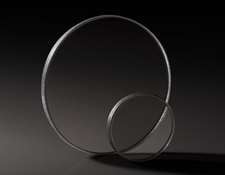

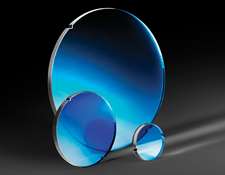

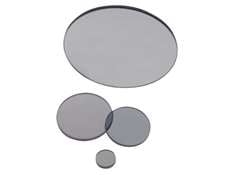

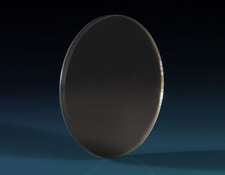
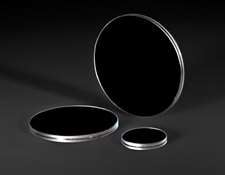
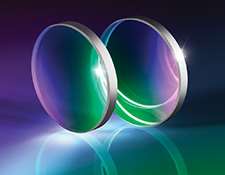
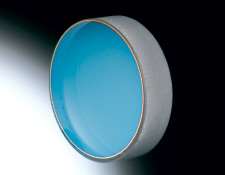



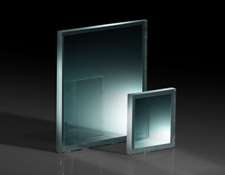

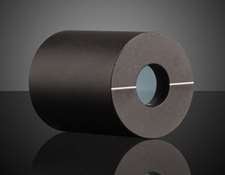
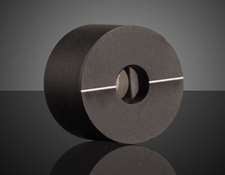
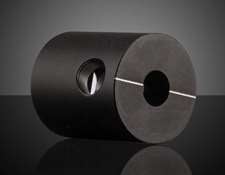
















본사 및 지사별 연락처 확인하기
견적 요청 도구
재고 번호 입력 필요
Copyright 2023, 에드몬드옵틱스코리아 사업자 등록번호: 110-81-74657 | 대표이사: 앙텍하우 | 통신판매업 신고번호: 제 2022-서울마포-0965호, 서울특별시 마포구 월드컵북로 21, 7층 (서교동, 풍성빌딩)